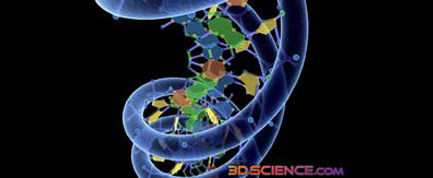How Life Began: New Research Suggests Simple Approach

Somewhere on Earth, close to 4 billion years ago, a set of molecular reactions flipped a switch and became life. Scientists try to imagine this animating event by simplifying the processes that characterize living things.
New research suggests the simplification needs to go further.
All currently known organisms rely on DNA to replicate and proteins to run cellular machinery, but these large molecules—intricate weaves of thousands of atoms—are not likely to have been around for the first organisms to use.
"Life could have started up from the small molecules that nature provided," says Robert Shapiro,a chemist from New York University .
Shapiro and others insist that the first life forms were self-contained chemistry experiments that grew, reproduced and even evolved without needing the complicated molecules that define biology as we now know it.
Primordial soup
An often-told origin-of-life story is that complex biological compounds assembled by chance out of an organic broth on the early Earth's surface. This pre-biotic synthesis culminated in one of these bio-molecules being able to make copies of itself.
Sign up for the Live Science daily newsletter now
Get the world’s most fascinating discoveries delivered straight to your inbox.
The first support for this idea of life arising out of the primordial soup came from the famous 1953 experiment by Stanley Miller and Harold Urey, in which they made amino acids—the building blocks of proteins—by applying sparks to a test tube of hydrogen, methane, ammonia, and water.
If amino acids could come together out of raw ingredients, then bigger, more complex molecules could presumably form given enough time. Biologists have devised various scenarios in which this assemblage takes place in tidal pools, near underwater volcanic vents, on the surface of clay sediments, or even in outer space.
But were the first complex molecules proteins or DNA or something else? Biologists face a chicken-and-egg problem in that proteins are needed to replicate DNA, but DNA is necessary to instruct the building of proteins.
Many researchers, therefore, think that RNA — a cousin of DNA — may have been the first complex molecule on which life was based. RNA carries genetic information like DNA, but it can also direct chemical reactions as proteins do.
Metabolism first
Shapiro, however, thinks this so-called "RNA world" is still too complex to be the origin of life. Information-carrying molecules like RNA are sequences of molecular "bits." The primordial soup would be full of things that would terminate these sequences before they grew long enough to be useful, Shapiro says.
"In the very beginning, you couldn't have genetic material that could copy itself unless you had chemists back then doing it for you," Shapiro told LiveScience.
Instead of complex molecules, life started with small molecules interacting through a closed cycle of reactions, Shapiro argues in the June issue of the Quarterly Review of Biology. These reactions would produce compounds that would feed back into the cycle, creating an ever-growing reaction network.
All the interrelated chemistry might be contained in simple membranes, or what physicist Freeman Dyson calls "garbage bags." These might divide just like cells do, with each new bag carrying the chemicals to restart — or replicate — the original cycle. In this way, "genetic" information could be passed down.
Moreover, the system could evolve by creating more complicated molecules that would perform the reactions better than the small molecules. "The system would learn to make slightly larger molecules," Shapiro says.
This origin of life based on small molecules is sometimes called "metabolism first" (to contrast it with the "genes first" RNA world). To answer critics who say that small-molecule chemistry is not organized enough to produce life, Shapiro introduces the concept of an energetically favorable "driver reaction" that would act as a constant engine to run the various cycles.
Driving the first step in evolution
A possible candidate for Shapiro's driver reaction might have been recently discovered in an undersea microbe, Methanosarcina acetivorans, which eats carbon monoxide and expels methane and acetate (related to vinegar).
Biologist James Ferry and geochemist Christopher House from Penn State University found that this primitive organism can get energy from a reaction between acetate and the mineral iron sulfide. Compared to other energy-harnessing processes that require dozens of proteins, this acetate-based reaction runs with the help of just two very simple proteins.
The researchers propose in this month's issue of Molecular Biology and Evolution that this stripped-down geochemical cycle was what the first organisms used to power their growth. "This cycle is where all evolution emanated from," Ferry says. "It is the father of all life."
Shapiro is skeptical: Something had to form the two proteins. But he thinks this discovery might point in the right direction. "We have to let nature instruct us," he says.











